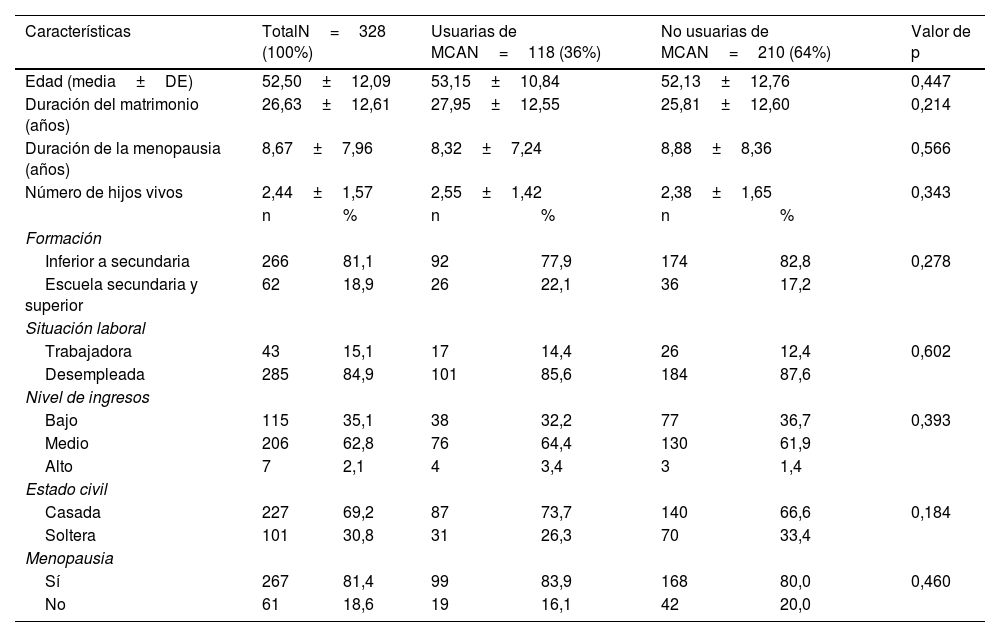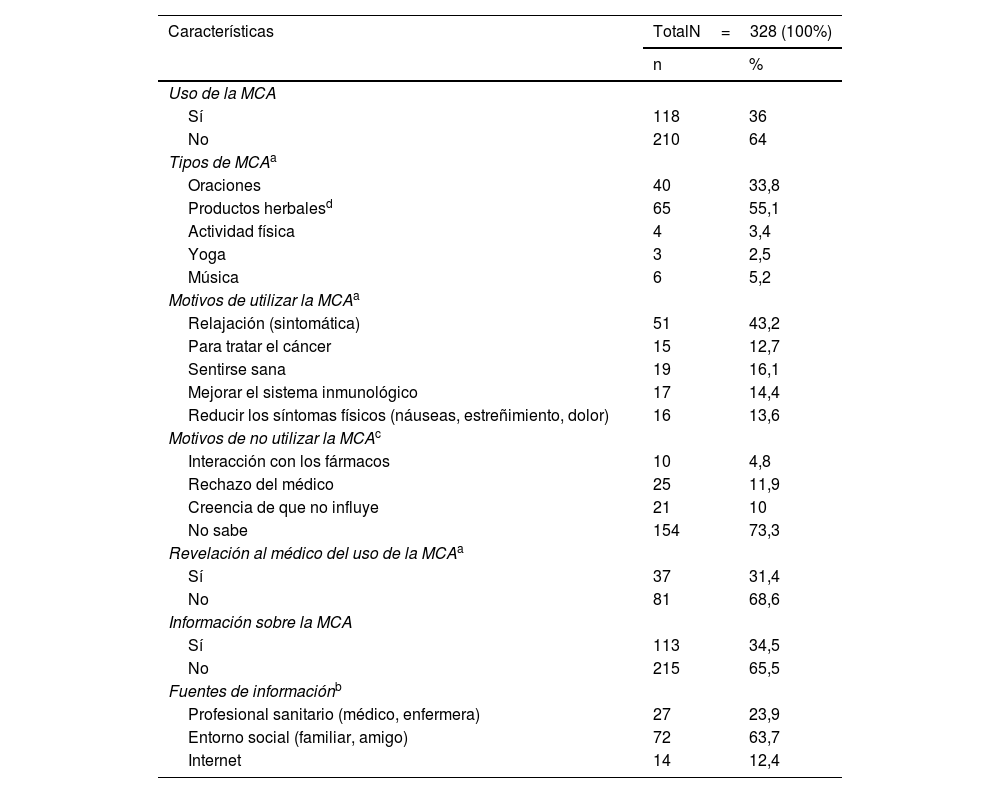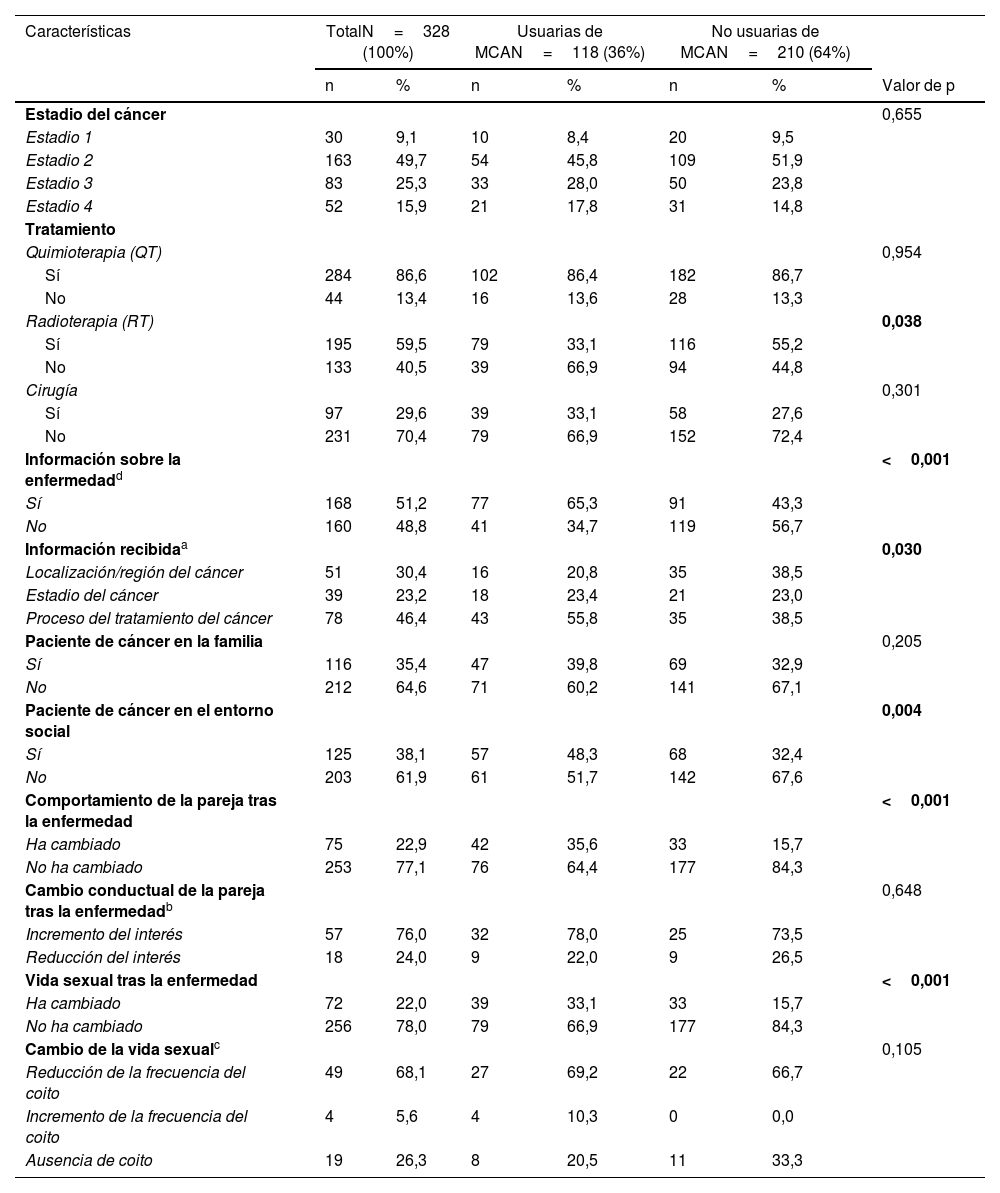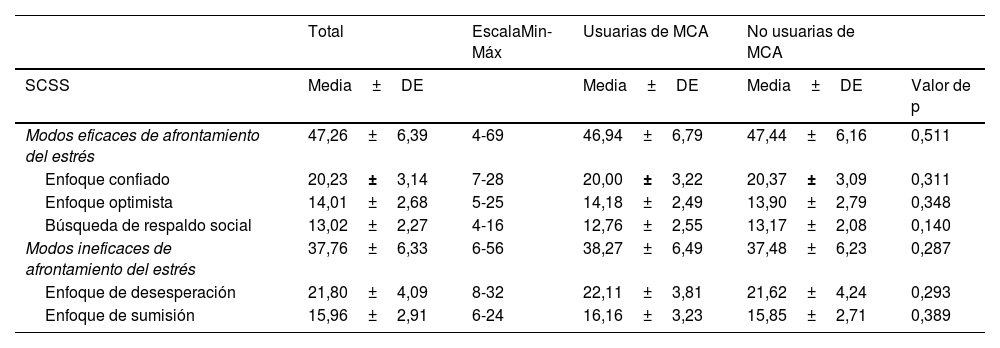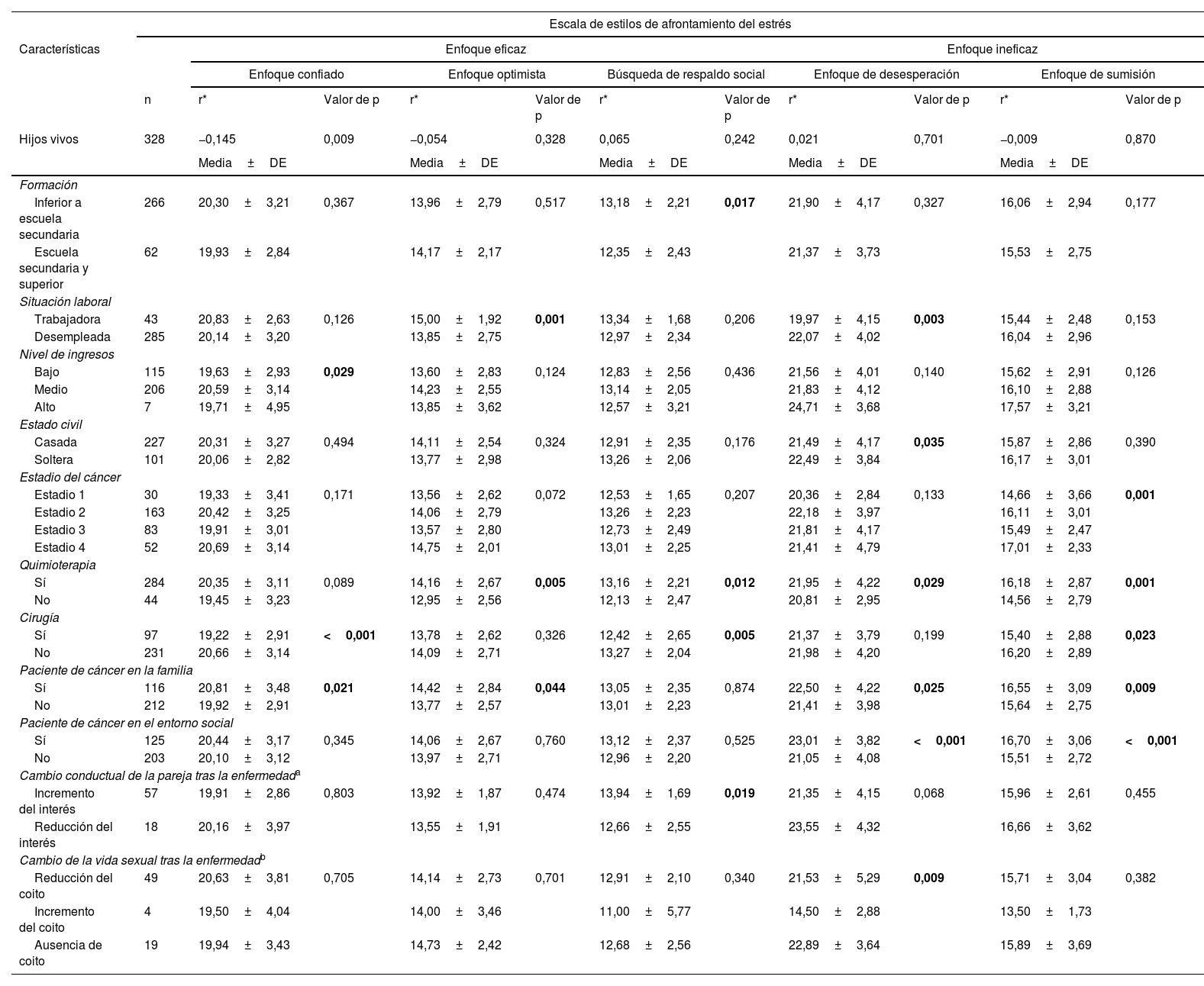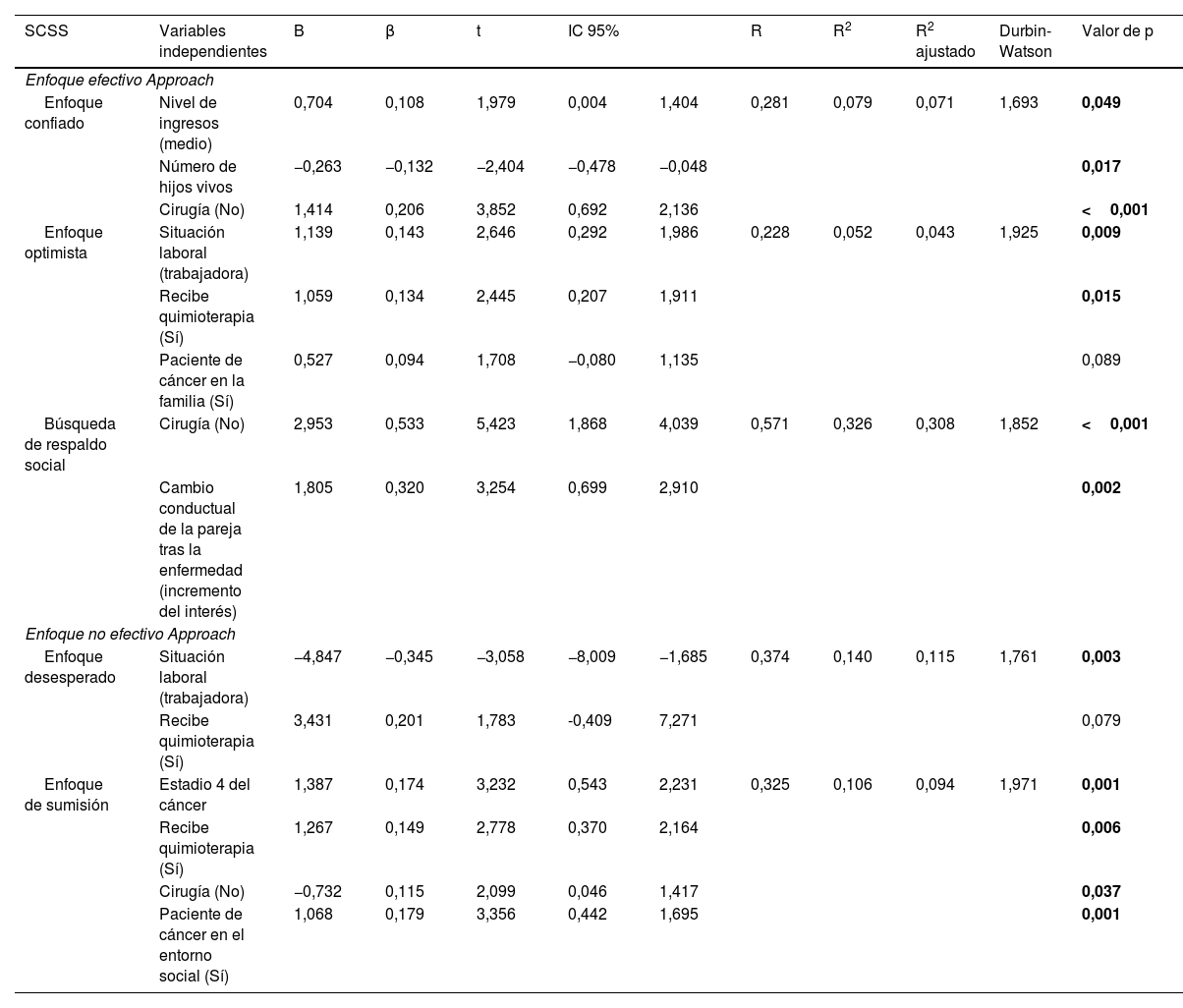El estudio tiene como objetivo revelar los enfoques de afrontamiento del estrés de las mujeres con cáncer de mama y los factores que predicen estos enfoques, determinar la prevalencia y las características de la medicina complementaria y alternativa (MCA), y examinar la relación entre el uso de la MCA y los enfoques de afrontamiento del estrés.
MétodoSe realizó un estudio descriptivo y transversal entre 328 mujeres con cáncer de mama en un hospital de formación e investigación de Turquía. Los datos fueron recolectados con el «Formulario de Información Descriptiva» y la «escala de estilos de afrontamiento del estrés» (SCSS).
ResultadosLa puntuación SCSS de las mujeres fue 47,26±6,39 (eficaz) y 37,76±6,33 (ineficaz). La puntuación SCSS no fue significativamente diferente entre usuarias de MCA y no usuarias de MCA (p>0,05). La prevalencia de uso de la CAM fue del 36%, los tipos más comunes de MCA fueron los productos a base de hierbas (55,1%) y la oración (33,8%), y las razones para el uso de MCA fueron para la relajación (sintomática) (43,2%). Como resultado del análisis de regresión logística multivariante, el nivel de ingresos, el trabajo, el número de hijos vivos, recibir quimioterapia, recibir cirugía, tener antecedentes familiares de cáncer y el interés de su pareja tras la enfermedad se asociaron con un afrontamiento eficaz del estrés (p<0,05; R2 ajustado=0,08, 0,05 y 0,33, respectivamente). Trabajar, recibir quimioterapia, recibir cirugía, el estadio del cáncer y tener antecedentes de cáncer en el entorno social se asociaron a un afrontamiento ineficaz del estrés (p<0,05; R2 ajustado=0,14 y 0,11, respectivamente).
ConclusionesUn tercio de las mujeres utilizaban la MCA y tenían un buen nivel de enfoque para afrontar el estrés. Los proveedores de atención médica, especialmente las enfermeras de ginecología y oncología, deben brindar asesoramiento sobre la MCA y desarrollar estrategias para afrontar el estrés en las mujeres con cáncer de mama.
The study aimed to reveal the approaches to coping with stress of women with breast cancer and the factors predicting these approaches, to determine the prevalence and characteristics of Complementary and Alternative Medicine (CAM), and to examine the relationship between use of CAM and approaches to coping with stress.
MethodsA descriptive and cross-sectional study was conducted among 328 women with breast cancer at a training and research hospital in Türkiye. Data were collected with the Descriptive Information Form and the Stress Coping Styles Scale (SCSS).
ResultsWomen's SCSS score was 47.26±6.39 (effective) and 37.76±6.33 (ineffective). The SCSS score were not significantly different between CAM users and non-CAM users (P>.05). The prevalence of CAM use was 36%, the most common types of CAM were herbal products (55.1%) and prayer (33.8%) and the reasons for using CAM were for relaxation (symptomatic) (43.2%). As a result of multivariate logistic regression analysis, level of income, working, number of living children, receiving chemotherapy, receiving surgery, having a family history of cancer, and the interest of their partner after the disease were associated with effective coping with stress (P<.05, adjusted R2=.08, .05, and .33 respectively). Working, receiving chemotherapy, receiving surgery, stage of cancer, and having a history of cancer in a social environment were associated with ineffective coping with stress (P<.05, adjusted R2=.14 and .11 respectively).
ConclusionsOne-third of women were using CAM and had a good level of approaches to coping with stress. Healthcare providers, especially gynecology-oncology nurses, should provide counseling on CAMs and develop strategies for coping with stress for women with breast cancer.






